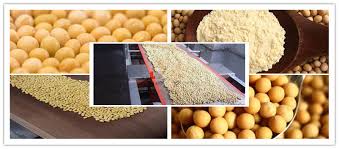The use of microwave or radio waves is one of the newest methods of processing in the food industry for both human and animal consumption.

Electromagnetic waves of microwaves encompass the range between radio waves and infrared waves. The main advantage of the microwave process is faster heating with higher energy efficiency. Other advantages of this method include the high quality of the produced product in terms of taste, texture, and preservation of nutritional composition. Microwave technology can be utilized in various industries such as thawing, enzyme deactivation, drying, cooking, toasting, pasteurization, sterilization, microbial reduction, and elimination of parasites and insects.
1715515680726.jpg)
In the microwave process, the waves generated by the magnetron create a perpendicular magnetic field that polar molecules like water and proteins align with, oscillating around an axis. These oscillations generate energy. Microwave technology in soy processing with the effective power of a microwave device operating at a frequency of 2450 megahertz and 275 watts of energy is notable.
The main characteristics of this processing are the ability to hydrolyze full-fat soy products and increase dry matter (DM). This is while microwave has no effect on the raw protein and fat content of the product. It also increases the metabolizable protein content.

Due to the short cooking time, microwave does not allow for the Maillard reaction to occur. Upon completion of the Maillard reaction, the color of the produced product darkens, and RUP or rumen undegradable protein increases. However, this increase in RUP is not in proteins digestible in animals but is related to FRACTION C.

